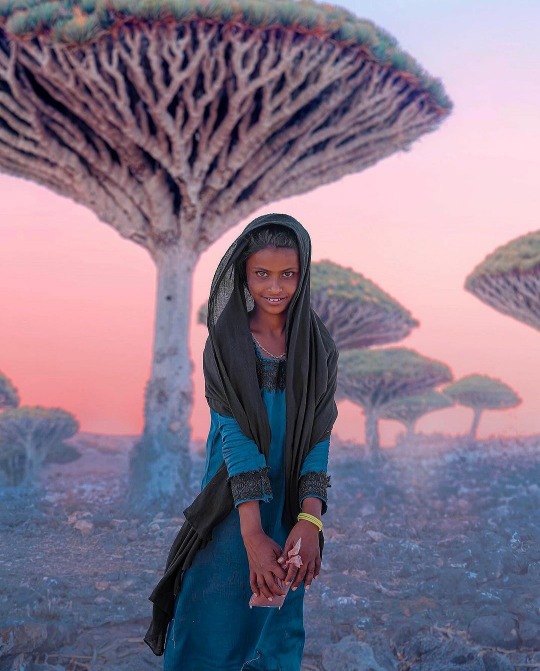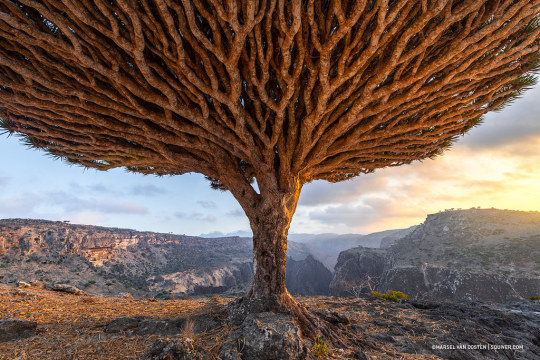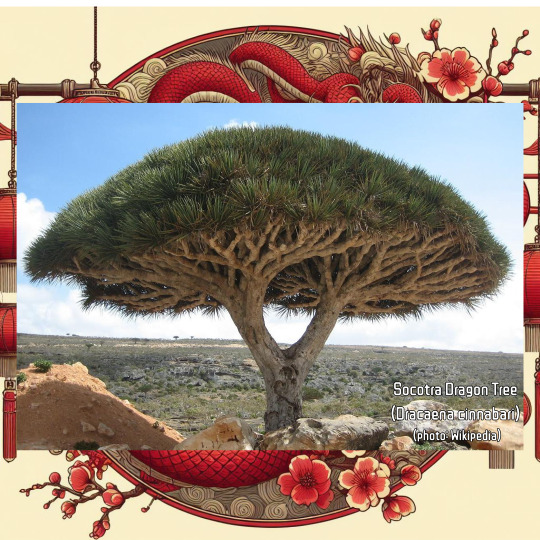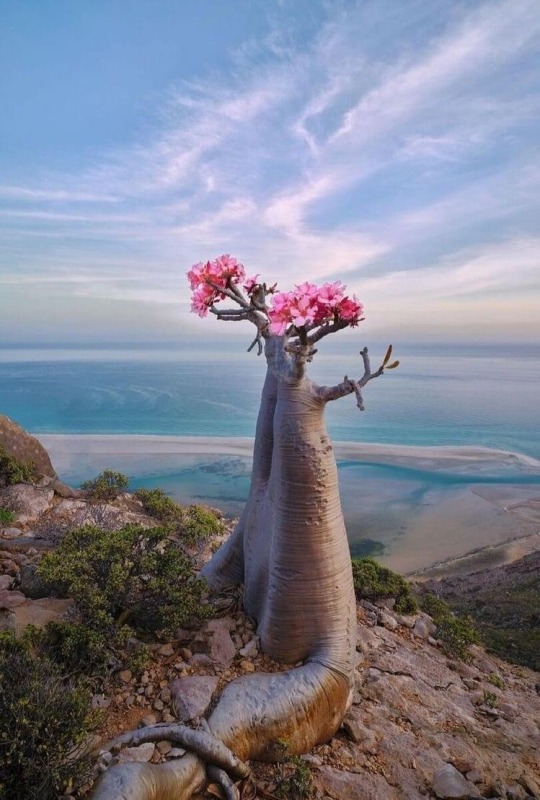#socotra
Text

Kalisan Canyon, Socotra Islands / Yemen (by Kristina Makeeva).
3K notes
·
View notes
Text

Beth Moon (American, b. 1955)
Shebehon Forest, 2000-2010
272 notes
·
View notes
Text


Dracaena cinnabari, the Socotra dragon tree or dragon blood tree, is a dragon tree native to the Socotra archipelago, part of Yemen, located in the Arabian Sea. It is named after the blood-like color of the red sap that the trees produce. It is considered the national tree of Yemen.
107 notes
·
View notes
Text

“The Bottle Tree Portal”
Socotra, Yemen.
Photographer: Benjamin Barakat
Milky Way Photographer of the Year
#benjamin barakat#photographer#milky way photographer of the year#bottle tree#tree#landscape#socotra#yemen#desert#nature#milky way#night sky
60 notes
·
View notes
Text



Kristina Makeeva 📷 @hobopeeba
Girl in Socotra
9 notes
·
View notes
Text

Adenium Socotranum - First Choice Plant Nursery of Socotra Island Yemen
28 notes
·
View notes
Text
The beauty of the unique island of Socotra.
.
#nature#beautiful#earth#amazing#amazeinfinity#travel#planet#aesthetic#Ocean.#island#photography#naturebeauty#Trees#socotra
18 notes
·
View notes
Text


Detwah Lagoon, Socotra Island, Yemen.
14 notes
·
View notes
Photo

Upside Down by Marsel van Oosten https://flic.kr/p/2hFD129
63 notes
·
View notes
Text

We offer bespoke tours and we can adjust our itinerary to your needs. With our Estonian and British guests we trekked in Hajher mountains, the stunning fairytale peaks famous with their special endemic plants.
DM us for info about prices and itineraries, let's start planning your next adventure 🐬
#italy#milan#socotra#travel destinations#europe#beaches#ocean view#palm trees#photographers on tumblr#sand dunes#sightseeing#travel guide#spirituality#waterfalls#women traveling#grouptravel#group trips#travel agency#viaggio#dunes#avventure
2 notes
·
View notes
Text




Dragons of the Plant World
Happy Lunar New Year of the Wood Dragon! The Lunar New Year is a major cultural event celebrated in Asia and across the world. The year of the wood dragon begins on February 10th 2024 and concludes on January 29th, 2025. The Asian dragon or “Loong” is a noble, benevolent creature unlike the destructive monsters of Western folklore. Let’s meet some plants named after dragons!
A whole genus of monocot trees is named after dragons, namely the genus Dracaena which includes 120 species of trees and succulent shrubs native to Africa, South Asia, Australia, and Central America. The name Dracaena is derived from a Greek word meaning “female dragon”. It is unclear why these trees are named after dragons, but their spiky foliage and scaly trunks may recall the typical traits of western dragons. Additionally, the Socotra Dragon Tree (Dracaena cinnabari) yields a red resin known as “Dragon’s Blood” which was harvested from these trees since ancient times and used in the Mediterranean and the Middle East for dye and medicines. Several Dracaena species including Dracaena marinata are popular houseplants since they require minimal water and can tolerate low light levels in indoor environments.
Dragonfruit is a tropical treat that comes from a cactus. The Dragonfruit cactus is a general name for one of three species in the Selenicereus genus and is commonly known as the Pitahaya or Moonlight Cactus. These night-blooming lanky cacti are epiphytic and lithophytic, meaning they grow on trees and stones instead of rooting directly into the ground. Their hot pink or yellows fruit have dragon-like fleshy scales and an interior that can be either white or red. Although they were originally cultivated in South America, Vietnam is now the main producer of Dragonfruit. The fruit is rich in dietary fibre, vitamin C, betalains, and carotenoids.
Snapdragons (Anthrrhinum genus) have flowers with cute dragon-like snouts that open and close like a mouth when pressed sideways. These perennial flowers add fiery hues like yellow, orange, red, and pink to cottage gardens of Northern Europe and are a favourite of bees. The Snapdragon (A. majus) is a model organism for plant biology research, especially biochemical studies and developmental biology as well as research on plant-pollinator interactions.
I hope the Year of the Wood Dragon brings new growth to you and your plant collection!Features photos from Wikipedia along with my original AI-generated art made with DALL E.
#katia plant scientist#botany#plant biology#plants#plant science#dragons#dragon#chinese dragon#asian dragon#chinese mythology#lunar new year#chinese new year#year of the dragon#year of the wood dragon#new year#dragon tree#dracaena#dragon blood#socotra#red dye#dragonfruit#dragon fruit#pitaya#pitahaya#cactus#south america#fruit#tropical fruit#snapdragon#flowers
6 notes
·
View notes



